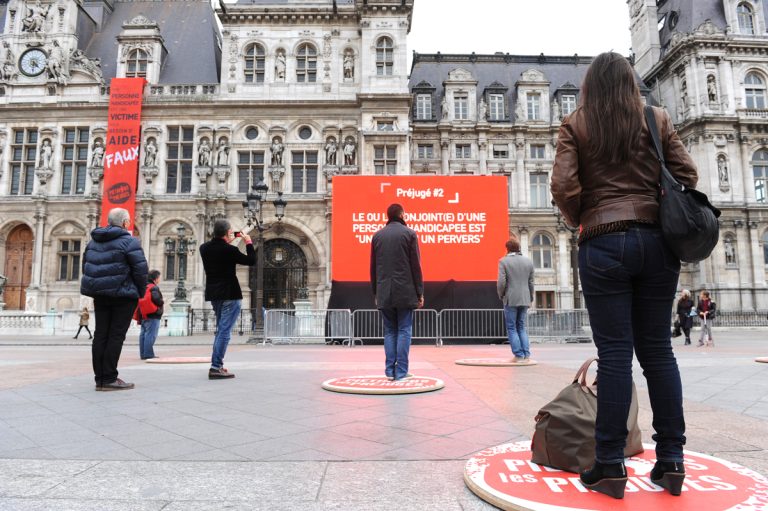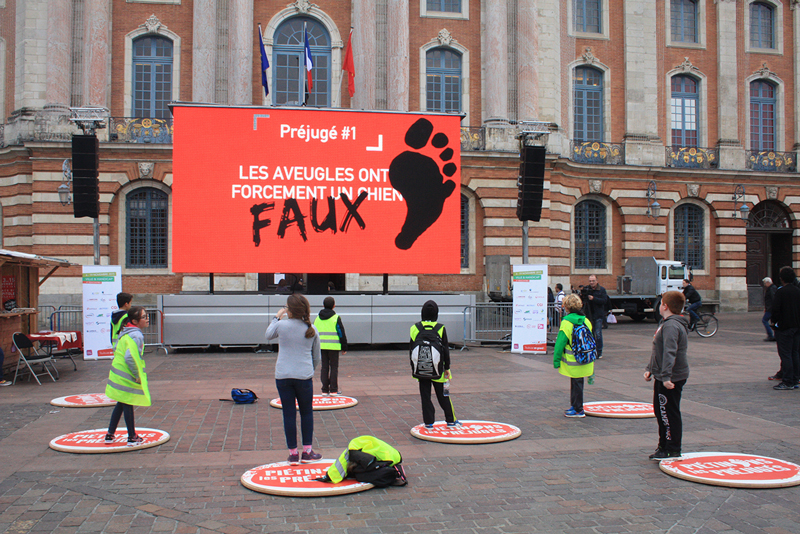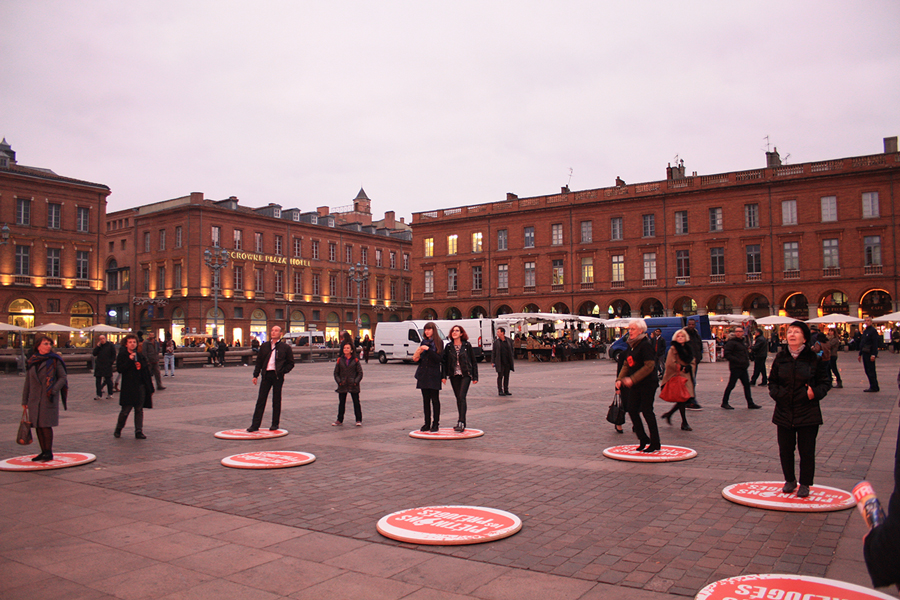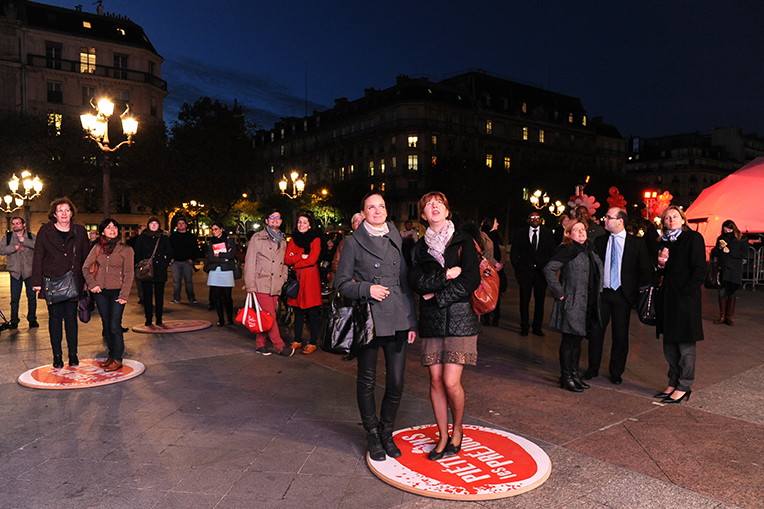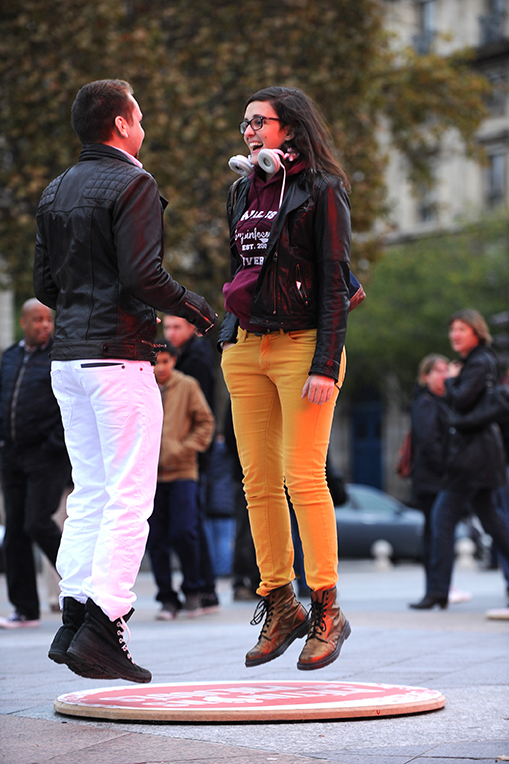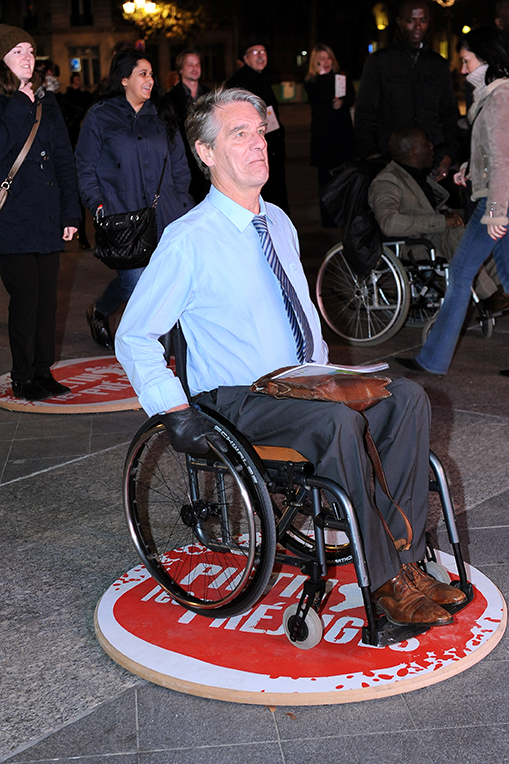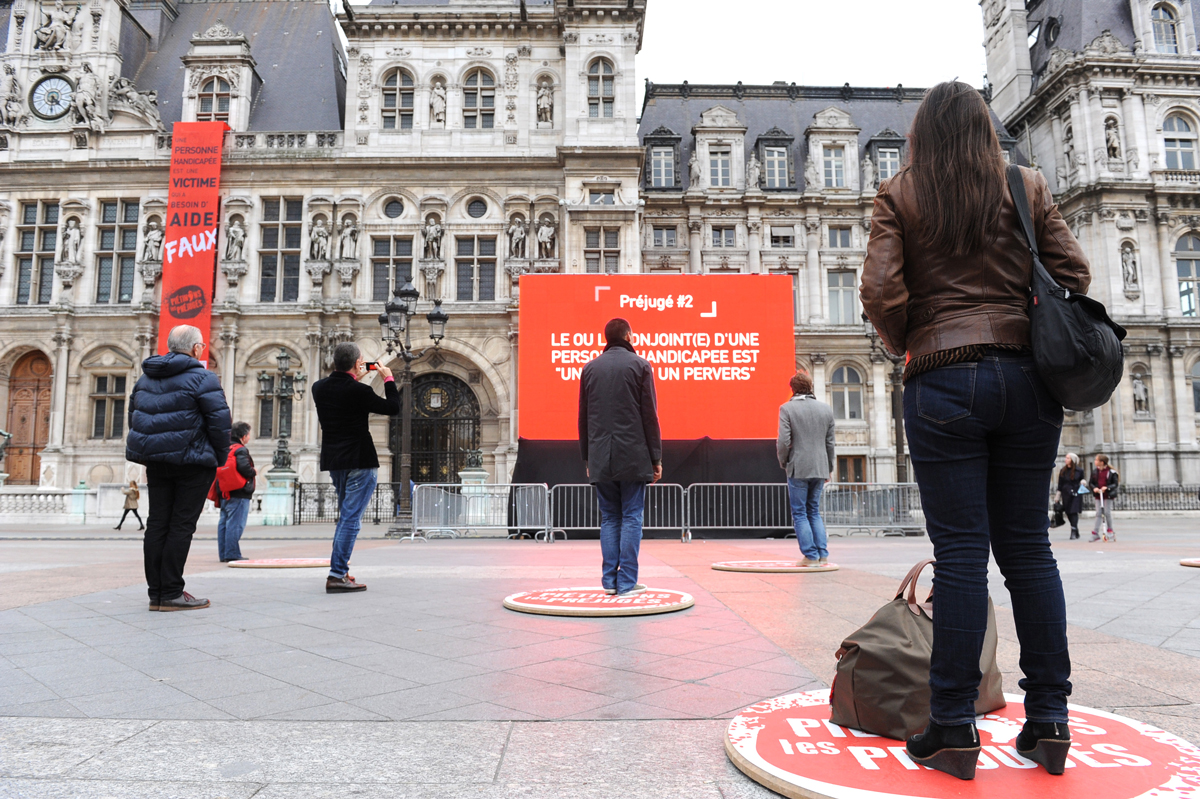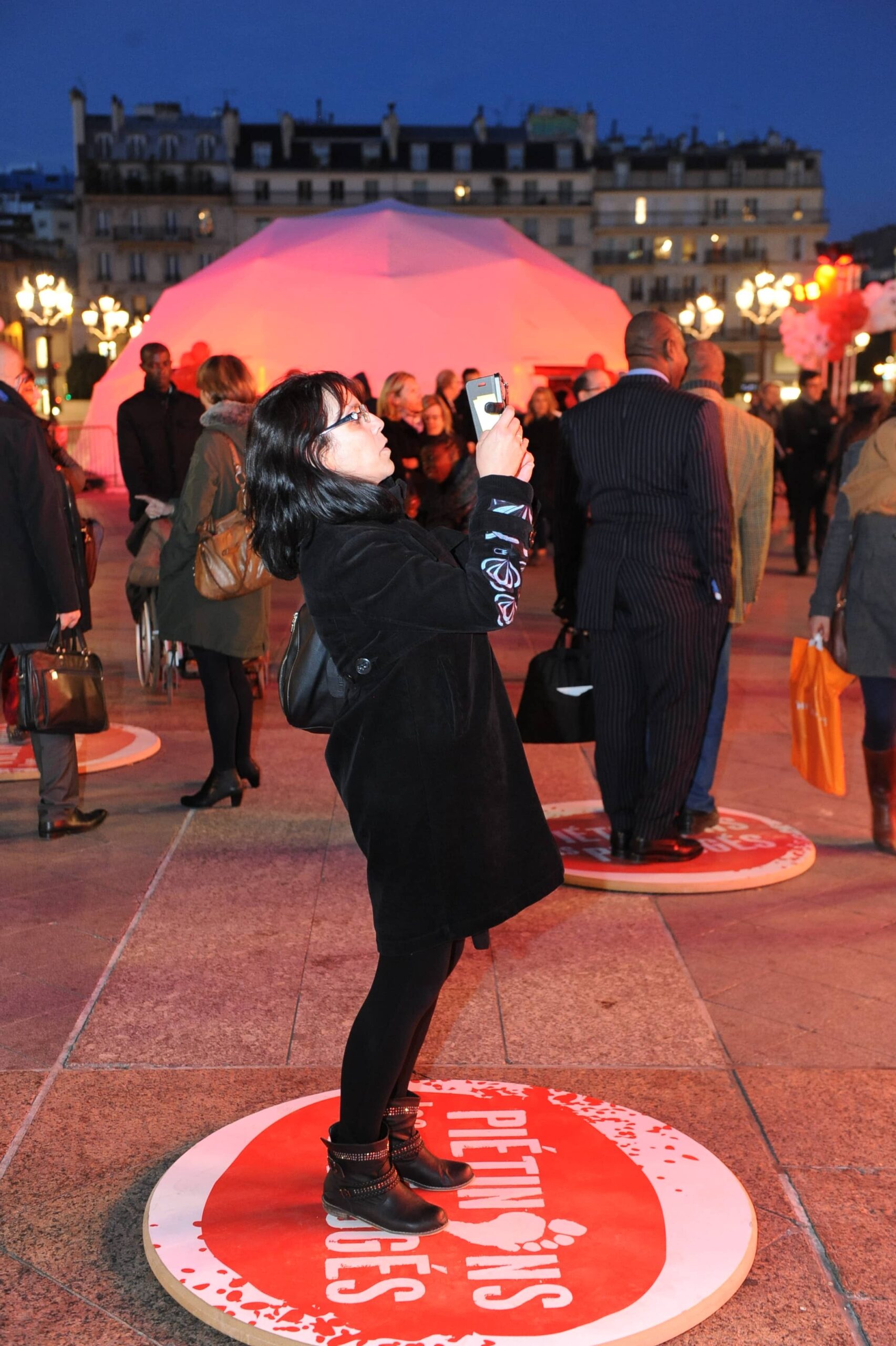Let’s trample prejudices
FOREWORD
Prejudice is a preconceived belief about a subject, an individual, or a group of individuals. It may be unfounded or based on a singular experience that is generalized and applied to a group of people. Prejudice is confining. It leads to negative attitudes and/or discriminatory behavior towards the targeted person or group. It has serious consequences, both individually and collectively.
I envisioned this concept to make a meaningful contribution to the fight against prejudice and discrimination, with the aim of fostering better social cohesion. This action-research was initially inspired by the issue of disability before expanding to encompass other topics.
WHY STOMP OUT PREJUDICES?
Disabled individuals are often trapped in representations that are far removed from their actual lived experiences.
This leads to challenging social and professional integration and, at times, makes personal fulfillment seem impossible.
Prejudices are sometimes a social legacy passed down from generation to generation. To put an end to them
for good, a thorough deconstruction of preconceived ideas is essential. I believe this process is most effective when
it fosters both direct engagement and interaction among all stakeholders involved.
I firmly believe that every individual has an authentic zone of excellence, where their passions and talents intersect.
When a person operates from their zone of authentic excellence, they contribute their richness to the world and,
in return, find meaning, energy, and joy.”
PRINCIPLE
A street art campaign designed with a highly symbolic approach: passersby are invited to “trample” on prejudices
displayed as graffiti on the ground or shown on a giant screen. By involving them in this playful, interactive, and
educational action, participants begin a personal reflection on preconceived ideas, which encourages a shift in their
own mindset. The outcome is undeniably a reduction in both conscious and unconscious discrimination related
to disability.
OBJECTIVES
- Better support people with disabilities in recognizing and managing their human potential.
- Inform and raise public awareness about the real-life experiences of people with disabilities.
- Address potential concerns from managers or colleagues regarding the integration of workers with disabilities.
SOME STOMPED PREJUDICES
- A disabled worker is an extra burden for their colleagues
- You can’t fire a disabled worker
- Disabled workers are more frequently on sick leave than others
- Blind people always have a guide dog
- The partner of a disabled person is either a saint or a pervert
- Autism is caused by the mother
- Deaf people live in their own world
- People with mental health issues are just overly sensitive, don’t take control of their lives, and lack willpower
- Disabled people bring bad luck
- Disability is a financial burden on society
We were immediately captivated by the highly innovative and unconventional nature of the proposed campaign; and
we thought it would be a complementary lever to help our employees evolve their attitudes towards disability.”
We were immediately captivated by the highly innovative and unconventional nature of the proposed campaign; and
we thought it would be a complementary lever to help our employees evolve their attitudes towards disability.
“Stomping on Prejudices” is a unique experience. Through its various tools, a wide audience, not directly affected by
the issue of disability, was able to spontaneously, directly, and tangibly participate in the fight against disability-related
discrimination.
For my part, I had the immense pleasure of designing and orchestrating this campaign both externally in various cities
and internally within different organizations. Authentic and enriching exchanges took place with hundreds of thousands
of participants from diverse human, social, and cultural backgrounds, fostering mutual understanding and coexistence.
“Stomping on Prejudices” remains relevant, and I fully intend to continue this work in one way or another.
